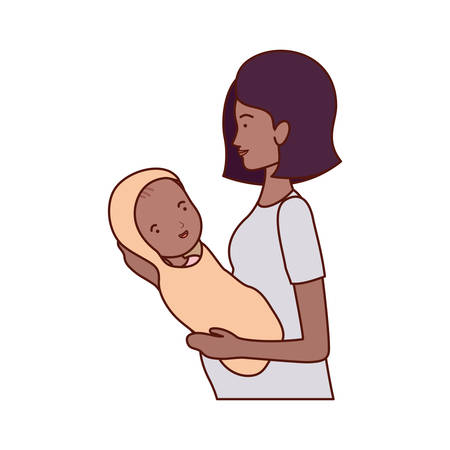1. Getting Ready: Choosing Bottles and Formula
Before you begin bottle-feeding your newborn, it’s important to choose the right supplies and make sure everything is prepared safely. Start by selecting a bottle that’s made from BPA-free materials and easy to hold, both for you and your baby. There are different types of nipples to consider—some are designed to mimic breastfeeding, while others offer various flow rates. For newborns, opt for a slow-flow nipple to help prevent choking or overfeeding.
If you plan on using formula, always follow the instructions on the packaging closely. Use clean, filtered water and measure each scoop of formula accurately. For parents who want to bottle-feed breast milk, be sure to store it in sterilized containers and warm it gently by placing the bottle in a bowl of warm water—never use the microwave, as it can create hot spots that might burn your baby’s mouth.
Proper preparation not only supports your baby’s nutrition but also gives you peace of mind as you start this new routine. Double-check that all bottles, nipples, and any feeding equipment are thoroughly cleaned and sterilized before each use. This careful approach ensures your newborn gets the safest start with bottle-feeding.
Proper Bottle-Feeding Position
Ensuring your newborn is in the right position during bottle-feeding is essential for both safety and comfort. The way you hold your baby supports healthy feeding, reduces the risk of choking, and helps foster a strong parent-child bond. Here are some practical tips and guidelines for proper positioning:
Tips for Holding Your Baby Safely and Comfortably
- Support the Head and Neck: Always cradle your babys head in the crook of your arm or with your hand, making sure their neck is straight but relaxed. This support helps prevent accidental tipping or straining.
- Keep Baby Semi-Upright: Position your baby at a 45-degree angle, which helps prevent milk from flowing too quickly and reduces the risk of ear infections. Avoid laying your baby flat while feeding.
- Face-to-Face Contact: Hold your baby close, so you can maintain eye contact. This promotes emotional bonding and lets you respond quickly to their cues.
- Comfort for Both of You: Use a supportive chair or nursing pillow if needed, ensuring your arms don’t get tired during feeding sessions.
Recommended Bottle-Feeding Positions
| Position Name | Description | When to Use |
|---|---|---|
| Cradle Hold | Your baby’s head rests in the bend of your arm, with their body turned toward you. Their nose should be level with the nipple of the bottle. | This classic position is comfortable for most parents and works well for bonding. |
| Semi-Upright Hold | Your baby sits upright on your lap, supported by your chest or an arm, while you hold the bottle horizontally. | This position is ideal for babies with reflux or when you want to slow down milk flow. |
| Side-Lying Hold | Your baby lies on their side on a firm surface next to you, while you offer the bottle parallel to the ground. | This can mimic breastfeeding and is helpful for relaxed feeding at home. |
Safety Reminders During Feeding
- Never prop the bottle or leave your baby unattended during feeds.
- Watch for signs of discomfort such as coughing or turning away; pause feeding if needed.
- Burp your baby halfway through and after each feed to minimize gas.
Building Connection While Feeding
Bottle-feeding isn’t just about nutrition—it’s an opportunity to bond. Talk softly, smile, and make gentle eye contact as you feed. These small gestures help nurture trust and security in your newborn, making every feeding session meaningful.

3. Step-by-Step Bottle Feeding Technique
Ensuring your newborn’s feeding experience is safe and comfortable starts with the right technique. Here’s a step-by-step guide to bottle-feeding, designed with both your baby’s well-being and bonding time in mind.
Check the Milk Temperature
Always test the milk temperature before feeding. Shake a few drops onto the inside of your wrist—it should feel warm, not hot. Avoid microwaving bottles, as this can create dangerous hot spots; instead, warm bottles under running water or in a bottle warmer.
Hold the Bottle at the Right Angle
Cradle your baby in a semi-upright position, supporting their head. Hold the bottle horizontally, angled so that milk fills the nipple completely. This helps prevent your baby from swallowing air, which can lead to gas or discomfort. Watch for bubbles rising in the bottle; they indicate your baby is sucking effectively.
Monitor Your Baby’s Cues
Pay close attention to your newborn’s signals during feeding. Signs of hunger include rooting, sucking motions, and bringing hands to mouth. If your baby turns away, slows down, or seems fussy, they may need a break or be full. Never force your baby to finish a bottle—respect their cues for when they’ve had enough.
Burping and Comfort Breaks
Pause halfway through and at the end of each feeding to burp your baby. Gently pat their back while holding them upright over your shoulder or sitting on your lap. This helps release any swallowed air and keeps your baby comfortable.
Stay Present and Bond
Bottle-feeding isn’t just about nourishment—it’s a special time for connection. Make eye contact, talk softly, or sing as you feed your newborn. These moments help build trust and nurture emotional bonds between you and your little one.
4. Recognizing and Responding to Baby’s Hunger and Fullness Cues
Understanding your newborn’s hunger and fullness signals is essential for effective bottle-feeding and building a healthy feeding relationship. Babies can’t use words, so they communicate their needs through subtle cues. Responsive feeding—paying attention to these cues and adjusting accordingly—not only helps your baby get the right amount of nutrition but also supports emotional bonding and long-term healthy eating habits.
How to Notice Hunger Cues
Newborns show several signs when they’re hungry, even before crying. Recognizing these early cues helps you respond promptly, making feeding a calmer and more positive experience for both of you. Here are common hunger signals:
| Hunger Cue | Description |
|---|---|
| Rooting | Turning head toward your hand or breast, searching with mouth open |
| Sucking Motions | Lip smacking, sucking on hands or fingers, or trying to suck nearby objects |
| Mouthing Movements | Opening and closing mouth repeatedly |
| Fussing or Restlessness | Wiggling, squirming, or making small sounds before full-blown crying starts |
How to Notice Fullness (Satiety) Cues
Just as important as knowing when your baby is hungry is recognizing when they’ve had enough. Overfeeding can be uncomfortable for your newborn. Look for these signs that your baby is satisfied:
| Fullness Cue | Description |
|---|---|
| Slowing Down Sucking | Sucking becomes slower and less intense; may pause frequently |
| Pushing Bottle Away | Turns head from the bottle or pushes it out with tongue or hands |
| Relaxed Body Language | Arms and hands open up; body appears calm and content |
| Falling Asleep During Feeding | Closes eyes or dozes off while feeding, especially if not overtired before starting |
The Importance of Responsive Feeding for Your Baby’s Health
Responsive feeding—feeding according to your baby’s cues rather than a strict schedule—builds trust and helps regulate appetite naturally. This approach supports healthy weight gain, reduces the risk of overfeeding, and fosters a secure attachment between you and your baby. Always offer the bottle when early hunger cues appear, and stop when fullness cues are shown—even if there’s milk left in the bottle. Remember: every baby is unique, so tuning in to your little one’s specific signals will help create a positive feeding experience.
5. Creating a Bonding Experience
Bottle-feeding your newborn isn’t just about nourishment—it’s also a wonderful opportunity to build a deep emotional connection with your baby. Here are some ways you can foster bonding during every feeding session:
Make Eye Contact
Hold your baby close and look into their eyes while feeding. Eye contact helps your little one recognize you, feel secure, and begin to trust the world around them. This simple act is powerful in nurturing your baby’s emotional development.
Use Gentle Touch
Cradle your newborn in a comfortable position, supporting their head and body. Gently stroke their back, hands, or feet as they feed. The warmth and reassurance from your touch help your baby feel safe and loved.
Engage in Soothing Conversation
Talk softly or sing to your baby while bottle-feeding. Your familiar voice is calming for your newborn and encourages early language development. Even gentle humming or whispering can make feeding times more comforting and special.
Create a Calm Environment
Try to keep distractions to a minimum during feeding. Dim the lights, turn off loud electronics, and focus on this quiet time together. A peaceful setting allows both you and your baby to relax and enjoy the bonding experience.
Consistency Matters
Whether you’re at home or out, aim to keep bottle-feeding routines consistent. Over time, these shared moments will become cherished rituals that strengthen the unique bond between you and your newborn.
6. Burping and After-Feeding Care
Helping your newborn burp after bottle-feeding is an important step in preventing discomfort and supporting healthy digestion. Babies often swallow air while feeding, which can lead to gas, fussiness, or spitting up if not released. To help your baby burp, gently hold them upright against your chest with their head resting on your shoulder, or sit them on your lap and support their chest and head with one hand while you pat or rub their back softly with the other. Every baby is unique; some may need to burp multiple times during a feeding, while others might only need it once at the end.
Recognizing Signs of Discomfort or Gas
Pay attention to your baby’s cues during and after feeding. Signs that your little one may have swallowed extra air include squirming, arching their back, clenching their fists, or becoming unusually fussy. If you notice these behaviors, pause the feeding to try burping your baby before continuing. Allowing for breaks and being patient helps make feeding a more comfortable experience for both of you.
Keeping Feeding Times Calm and Positive
After feeding and burping, keep your baby upright for about 10-15 minutes to minimize spit-up and aid digestion. Creating a calm environment—dim lighting, gentle voices, and limited distractions—can help your newborn feel secure and relaxed during and after meals. Remember, every feeding is also a bonding opportunity. Use this time for soft cuddles, eye contact, and reassuring words. These positive interactions build trust and emotional connection between you and your baby.
Supporting Your Baby’s Wellbeing
If you consistently notice signs of discomfort, excessive gas, or frequent spit-ups despite proper burping techniques, consult your pediatrician. Sometimes simple changes in feeding methods or bottle types can make a big difference. Above all, approach each feeding with patience and care—your loving attention is just as nourishing as the milk itself.

